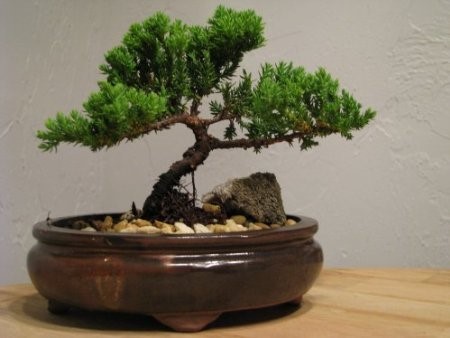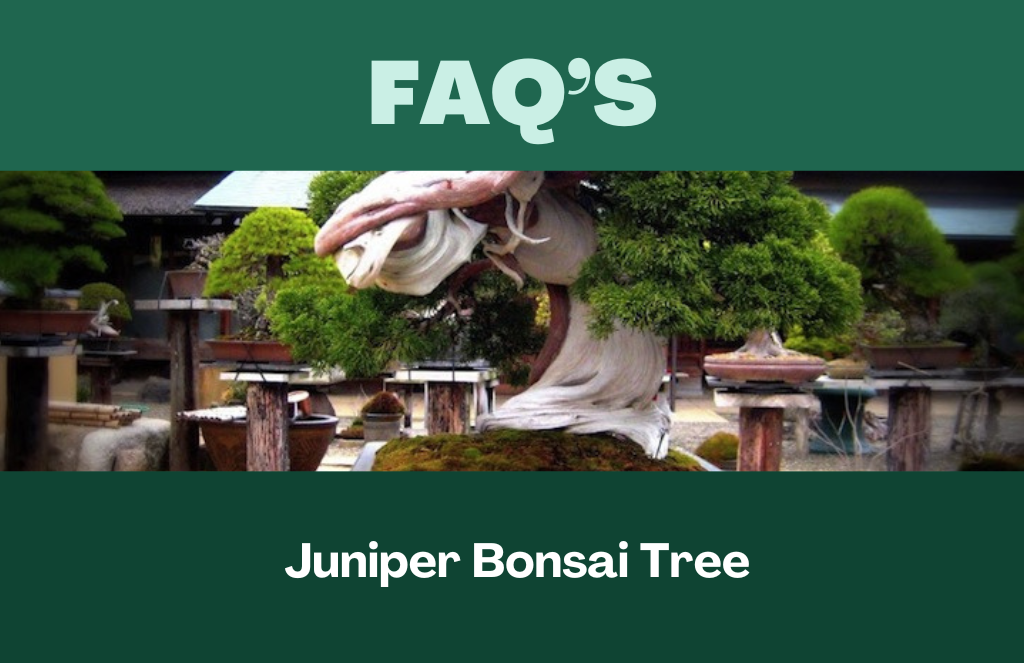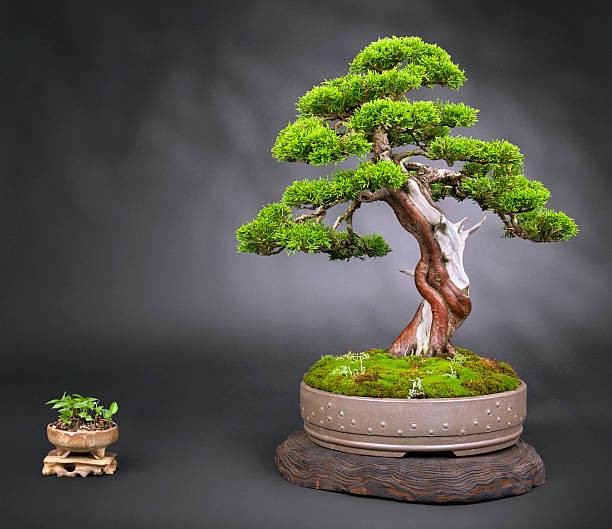Best Juniper Bonsai Tree Care
To care for a Juniper Bonsai tree, provide adequate sunlight and well-draining soil, and water regularly but avoid overwatering. A Juniper Bonsai tree is a popular choice among bonsai enthusiasts for its unique characteristics, beautiful foliage, and ability to withstand various climates.
With proper care, it can thrive and enhance your living space or garden. This article will provide you with essential tips to ensure the best care for your Juniper Bonsai tree. From sunlight requirements and appropriate soil selection to watering techniques and pruning methods, we will cover all aspects of maintaining a healthy and attractive bonsai tree.
Whether you are a novice or an experienced bonsai enthusiast, these guidelines will help you create a stunning and long-lasting Juniper Bonsai tree. So let’s dive in and explore the best practices for caring for your Juniper Bonsai tree.
How To Select The Best Juniper Bonsai Tree?
When it comes to creating a beautiful and stunning juniper bonsai tree, selecting the right one from the start is crucial. The choice you make will significantly impact the tree’s growth, appearance, and overall health. To ensure you make an informed decision, there are several factors to consider when choosing a juniper bonsai tree:
Factors To Consider When Choosing A Juniper Bonsai Tree
Size And Shape
If you want your juniper bonsai tree to fit perfectly within your desired space, the size and shape should be taken into account. Consider the dimensions of the area where you plan to display the tree.
Keep in mind that the size of the container will affect the overall size of the bonsai. Choose a size and shape that complements your indoor or outdoor environment while allowing the tree to grow and spread its foliage naturally.
Health And Condition
The health and condition of a juniper bonsai tree are crucial indicators of its ability to thrive and grow. Inspect the tree for any signs of pests, diseases, or damage. Look for healthy, vibrant foliage with no discoloration or wilting.
Examine the branches and trunk for any signs of weakness or decay. It is vital to choose a tree that is in good overall condition to ensure its long-term survival and success as a bonsai.
Age And Maturity
A juniper bonsai tree’s age and maturity play a significant role in its development and appearance. Younger trees are more flexible and easier to shape, allowing you to create the desired bonsai style.
However, older and more mature juniper bonsai trees often have more character and a well-defined structure.
Consider your personal preferences and the level of experience you have in bonsai cultivation when determining the age and maturity of the tree you desire.

Credit: www.amazon.com
Tips For Juniper Bonsai Tree Placement And Lighting
One of the most critical factors for the health and growth of your juniper bonsai tree is the placement and lighting it receives. Finding the ideal location and providing sufficient sunlight and suitable temperatures are essential for the tree’s well-being.
Whether you are keeping your bonsai tree indoors or outdoors, here are some tips to help you provide the right conditions:
Finding The Ideal Location For Your Juniper Bonsai Tree
Choosing the perfect spot for your juniper bonsai tree is crucial. It will determine the overall health and appearance of your tree. Here are some factors to consider when deciding on the placement:
- Look for a location with sufficient natural light:
Juniper bonsai trees thrive in bright, indirect sunlight. Choose a spot that receives at least 4 to 6 hours of sunlight each day. Place your tree near a window or on a patio that offers the right amount of light exposure. If you keep your bonsai tree indoors, ensure it is positioned close to a well-lit window.
- Avoid extreme temperature conditions:
Extreme temperatures can be detrimental to your juniper bonsai tree. Avoid placing it in areas that are exposed to drafts, extreme heat, or cold. Keep an eye on the outdoor temperatures and bring your tree indoors if it gets too cold during winter.
Sunlight Requirements
Sunlight is one of the primary sources of energy for your juniper bonsai tree. Providing adequate sunlight is essential for its growth and development. Here’s what you need to know about sunlight requirements:
- Indirect sunlight is ideal:
Juiniper bonsai trees prefer indirect sunlight, as direct sunlight can scorch the foliage. Place your tree in a location where it receives bright, filtered sunlight throughout the day.
- Rotate the tree:
To ensure even growth, rotate your bonsai tree periodically. This will expose all sides of the tree to sunlight, preventing it from leaning towards the light source.
Temperature Considerations
Juniper bonsai trees have specific temperature requirements to thrive. Here are some key points to keep in mind:
- Maintain moderate temperature:
Juniper bonsai trees prefer temperatures around 60 to 75 degrees Fahrenheit (15 to 24 degrees Celsius). Avoid exposing your tree to extreme temperature fluctuations, as it can stress the plant and hinder its growth.
- Protect from frost:
If you keep your bonsai tree outdoors, ensure it is shielded from frost during the winter months. Frost can cause damage to the tree’s delicate foliage and roots.
Using Artificial Lighting For Indoor Juniper Bonsai Trees
If you are keeping your juniper bonsai tree indoors, artificial lighting can supplement natural light and provide the required brightness. Here’s how to use artificial lighting effectively:
- Choose the right type of artificial light:
LED grow lights or fluorescent lights are well-suited for indoor bonsai trees. These lights emit the appropriate wavelengths necessary for photosynthesis and growth.
- Position the lights properly:
Place the lights above your bonsai tree, ensuring they are positioned at an appropriate distance to prevent scorching of the foliage. Follow the manufacturer’s instructions for recommended distances and durations.
- Adjust the lighting duration:
The amount of artificial light required will depend on the species and specific needs of your juniper bonsai tree. Experiment with different lighting schedules, starting with 10 to 14 hours per day and adjusting as needed.
Watering And Moisture Maintenance For Juniper Bonsai Trees
Watering and moisture maintenance are essential aspects of caring for juniper bonsai trees. These delicate trees require specific care to thrive and ensure their long-term health. Proper watering techniques play a significant role in maintaining the health and vitality of your juniper bonsai.
Watering Needs Of Juniper Bonsai Trees
Understanding the watering needs of juniper bonsai trees is crucial for their overall health. Junipers prefer a slightly dry soil environment, and overwatering can be detrimental to their well-being. It is essential to strike a balance, providing adequate moisture while allowing the soil to dry out slightly between waterings.
Frequency And Amount Of Watering
The frequency and amount of watering for juniper bonsai trees depend on various factors, including the size of the tree, pot size, environmental conditions, and the time of year. During the growing season, which typically occurs in spring and summer, the frequency of watering may increase. However, always remember to let the soil dry out slightly between waterings to prevent waterlogged roots.
As a general rule, it is recommended to check the soil’s moisture level before watering your juniper bonsai. Insert your finger about an inch into the soil, and if it feels slightly dry, it’s time to water. However, if the soil still retains moisture, wait a bit longer before watering again.
Proper Drainage And Soil Moisture
Proper drainage is crucial for juniper bonsai trees as excess water can lead to root rot and other issues. Ensure that your bonsai pot has drainage holes to allow excess water to escape. Additionally, it’s important to use well-draining soil designed specifically for bonsai trees, as these will prevent water from pooling at the roots.
Monitoring the soil moisture is also essential. Over time, the soil in your bonsai pot may compact and become less airy, inhibiting proper drainage. Periodically check your soil’s moisture level, and if it feels compacted, consider repotting your juniper bonsai to ensure adequate drainage and root health.
Mist Or Humidity Trays For Maintaining Moisture Levels
Maintaining moisture levels is crucial for the health and vitality of juniper bonsai trees, particularly in dry environments or during periods of low humidity. One way to achieve this is through misting the foliage regularly. Mist your juniper bonsai in the morning or early evening, taking care to avoid over-saturating the foliage or trunk.
Alternatively, you can place your juniper bonsai on a humidity tray. A humidity tray is a shallow tray filled with water, and the bonsai pot sits on top of it. As the water evaporates, it creates a humid microclimate around the tree, ensuring proper moisture levels are maintained.
Pruning And Training Techniques For Juniper Bonsai Trees
Pruning plays a crucial role in maintaining the health and aesthetic appeal of your juniper bonsai tree. By selectively removing unwanted growth and shaping the branches and foliage, you can create a visually pleasing bonsai that resembles the natural form of a mature tree.
Pruning also stimulates new growth and ensures proper air circulation, which is essential for preventing diseases and maintaining the overall vitality of your juniper bonsai.
Pruning Techniques For Foliage And Branches
Pruning techniques for foliage and branches are essential to maintain the desired shape and size of your juniper bonsai. A few key pruning techniques include:
- Pinching: Pinching involves using your fingers or bonsai pruning shears to remove the tips of young shoots. This technique promotes back-budding and increases the density of foliage.
- Thinning: Thinning refers to the selective removal of excess branches and foliage to improve light penetration and air circulation. It helps maintain balance and prevents the tree from becoming too dense.
- Carving: Carving is a technique used to create deadwood features on the trunk and branches. It adds visual interest and gives the bonsai a more aged and natural appearance.
Wiring And Shaping Techniques
Wiring and shaping techniques are employed to train the branches and create the desired shape of your juniper bonsai. Here are a couple of commonly used techniques:
Wiring: Wiring involves wrapping aluminum or copper wire around the branches to bend them into the desired position. It should be done carefully to avoid damaging the delicate branches. Once the branches have set in the desired position, the wire can be removed.
Clip and Grow: The clip-and-grow technique involves pruning the branches back to a bud and letting them grow freely. As the new growth emerges, it can be pruned again to help shape the bonsai over time.
Timing And Frequency Of Pruning And Training
The timing and frequency of pruning and training will depend on the specific needs of your juniper bonsai and its growth patterns. However, there are some general guidelines you can follow:
Foliage Pruning: Foliage pruning is typically done in spring or early summer when the new growth has hardened off. This is a good time to pinch back new shoots and thin out excessive foliage.
Branch Pruning: Branch pruning can be done throughout the year but is best performed during the tree’s dormant period in late winter or early spring. This reduces stress and allows the juniper bonsai to heal quickly.
Training: Training can be an ongoing process, but major shaping and wiring should be done during the tree’s active growth period, typically in spring and early summer.
In conclusion, pruning and training techniques are essential for maintaining the health and aesthetic appeal of your juniper bonsai tree. By implementing proper techniques and adhering to the timing and frequency guidelines, you can create a stunning bonsai that embodies the beauty of nature in your living space.
Juniper Bonsai Tree Fertilization And Nutrient Requirements
Juniper bonsai trees require a specific set of nutrients to thrive. The primary macronutrients that juniper bonsai trees require are nitrogen (N), phosphorus (P), and potassium (K). Nitrogen is crucial for promoting healthy foliage growth, phosphorus aids in root development and overall plant vigor, while potassium helps with disease resistance and fruiting.
In addition to these macronutrients, juniper bonsai trees also need secondary macronutrients such as calcium (Ca), magnesium (Mg), and sulfur (S) in lesser quantities. These nutrients are responsible for various physiological processes, including cell division, photosynthesis, and reproduction.
Furthermore, juniper bonsai trees require several micronutrients, albeit in trace amounts. These micronutrients include iron (Fe), manganese (Mn), zinc (Zn), copper (Cu), molybdenum (Mo), and boron (B). They play a critical role in enzyme activation, chlorophyll production, and overall plant growth.
Selecting The Right Fertilizer
When it comes to selecting the right fertilizer for your juniper bonsai tree, it is important to choose one that is specifically formulated for bonsai plants. Look for a balanced fertilizer with an NPK ratio of approximately 10:10:10 or 5:5:5. This ensures that your tree receives a balanced supply of essential nutrients without the risk of over-fertilization.
Organic fertilizers, such as fish emulsion or seaweed extract, can also be beneficial for juniper bonsai trees as they provide slow-release nutrients and help improve soil fertility.
Frequency And Application Methods
The frequency of fertilization for juniper bonsai trees depends on various factors, including the type of fertilizer used and the growth rate of your tree. As a general guideline, it is recommended to fertilize your juniper bonsai tree every four to six weeks during the growing season, which typically spans from early spring to late summer.
However, always refer to the specific instructions provided by the fertilizer manufacturer for the optimal application rate and frequency.
When it comes to applying the fertilizer, you have several options. One common method is to mix the fertilizer with water and apply it directly to the soil during watering. Alternatively, you can use slow-release pellets that gradually release nutrients over time.
It is important to follow the application instructions carefully to avoid over-fertilization, which can lead to nutrient imbalances and potentially harm your juniper bonsai tree.
Identifying Nutrient Deficiencies And Addressing Them
Regularly inspecting your juniper bonsai tree can help you identify any nutrient deficiencies and take appropriate action. Some common signs of nutrient deficiencies include yellowing or browning of leaves, stunted growth, and poor overall health.
If you notice any of these symptoms, it is crucial to diagnose the specific nutrient deficiency before providing the appropriate treatment.
A soil test can help determine the nutrient levels in the soil. Based on the results, you can target specific deficiencies by adjusting the fertilizer regimen or by applying foliar sprays that contain the deficient nutrients.
Additionally, it is important to ensure that your bonsai tree is receiving adequate sunlight, proper watering, and good drainage, as these factors also play a significant role in nutrient uptake and overall plant health.
Frequently Asked Questions

How Often Should I Water My Juniper Bonsai Tree?
Water your Juniper Bonsai Tree when the top inch of soil feels dry to the touch. Avoid overwatering as it can lead to root rot. During hot summer days, you may need to water your bonsai every day, while during winter months, you can reduce the frequency to once a week.
What Is The Ideal Temperature For A Juniper Bonsai Tree?
Juniper Bonsai Trees thrive in temperatures between 60-70°F during the day and around 50-55°F at night. They can tolerate slight fluctuations, but it’s best to keep them in a stable temperature environment to promote healthy growth.
How Do I Prune My Juniper Bonsai Tree?
Pruning is an important aspect of Juniper Bonsai Tree care. Use sharp bonsai scissors to trim any dead or yellowing branches. Prune back branches to maintain its desired shape and encourage new growth. Regularly removing old foliage helps improve light penetration, allowing for better overall health.
Conclusion
To maintain the health and beauty of your juniper bonsai tree, it is crucial to provide proper care. Regular watering, adequate sunlight, and suitable soil are key factors in ensuring its longevity. Pruning and shaping techniques should be utilized to create a pleasing aesthetic. By following these care guidelines, your juniper bonsai tree will thrive and bring a sense of tranquility to any space.

